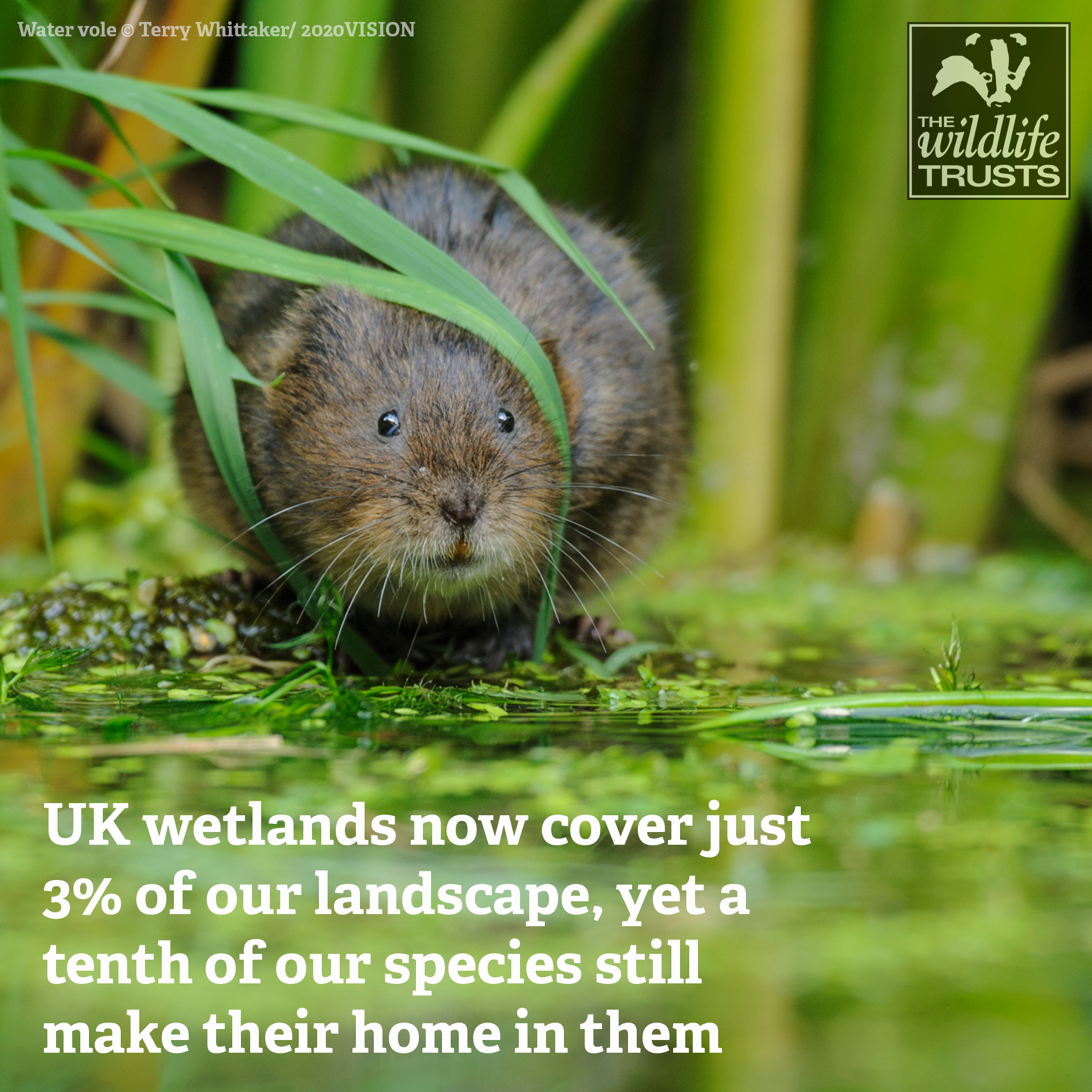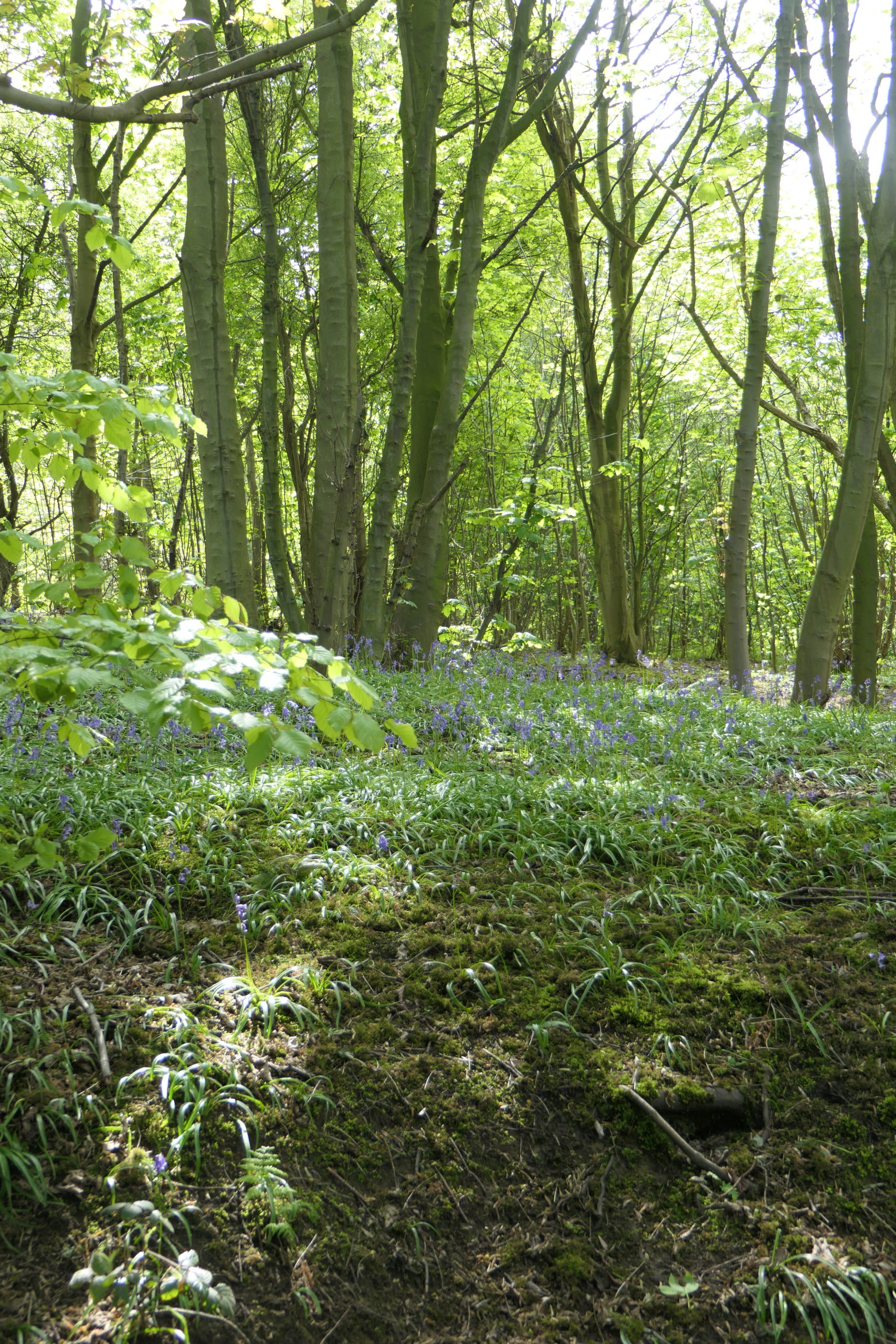We may be a ‘wet’ nation, but wetlands – wildlife-rich, carbon-capturing oases – are in shorter supply than you might think. Wetlands have largely been removed from our landscape, and this loss is a problem not just for nature, but for people too.
Wetland habitats take many forms, from upland peat bogs through to valley mires, floodplain meadows and vast reedbeds. Whether fed by rain or groundwater, these wet habitats all need a water supply to create the conditions that keep their soils, vegetation and resident species happy and healthy. In the UK we have lost a startling 90% of our former wetlands, often by draining them to make way for agriculture, development, forestry and other land uses.
This is bad for biodiversity, because around 40% of the world’s wildlife relies on freshwater wetlands. UK wetlands now cover just 3% of our landscape, yet a tenth of our species still make their home in them, and countless other creatures use wetlands to breed, hunt or forage for food. Our wet grasslands are where lapwing, curlew and snipe nest, bitterns boom in reedbeds, and bats swoop over watercourses and wetlands, feeding on the swarms of insects that emerge from them. Dragonflies, amphibians and the much-loved but endangered water vole can all be found across ponds and marshes, and now, in some places, as a result of the work of The Wildlife Trusts and others, beavers engineer new wetlands, creating habitat for aquatic insects, mammals and plants.
Wetlands are clearly important for many wild plants and animals, but we also rely on them. They provide ‘services’ that society needs, and without them, we struggle. The problems we face are set to intensify as our climate shifts and our settlements expand, unless we take urgent action to reverse these wetland losses. Here are just some of the essential services that wetlands provide:
Flood protection
Natural wetlands provide flood protection by slowing down and storing flood flows. Rough, tussocky sites like Devon’s Culm grasslands are extremely good at holding on to water – with research showing that, in comparison, 11 times more water leaves intensively managed grasslands during storms, placing communities downstream at risk.
Coastal reedbeds and saltmarshes buffer us from storm surges, and floodplains – when not built over – hold the excess flows from our river systems.
The use of these natural protections is termed ‘Natural Flood Management’, and can involve anything from small-scale features that mimic nature (like ‘leaky dams’ or flood storage ponds, which hold back water in high flows and allow it to drain through later, once the risk of flooding has passed) to vast habitat recreation, such as on low-lying farmland on the Essex coast at Abbotts Hall, where the failing sea wall was purposely breached to create new marshland, now teeming with migratory birds, and a network of creeks that form a valuable nursery for bass, herring and other fish.

Carbon storage
Wetlands are important stores of carbon – when wetland plants die, rather than decomposing and releasing their carbon into the atmosphere, they become buried in the sediment making up peatland soils. These soils, which accumulate over thousands of years, hold vast amounts of carbon and are our biggest carbon store on land. If allowed to dry out, they release CO2and rather than mitigating climate change contribute to it. Researchers have calculated that if all of the carbon held in peatlands globally were released, it would raise atmospheric CO2 concentrations by 75%, with catastrophic consequences for global climate.
Peatland rewetting prevents the release of this locked-up carbon, so is a key tool in our fight against climate change. Restoring fens and bogs will also provide crucial habitat for insect-eating plants, wading birds like dunlin, hen harriers, and numerous insect species, and where full-scale habitat restoration isn’t feasible, testing ways in which peatlands like the fens can be more sustainably farmed is a key part of the solution too. Other wetland habitats also suck up carbon, for example on saltmarsh, one study suggests that as new layers of sediment form they can store carbon nearly four times faster than trees!
Wellbeing
Wetlands are also good for mind, body and soul! The natural environment is proven to be important for both physical and mental health, and the NHS are now piloting ‘green’ social prescribing to help patients with issues like depression, anxiety, obesity, and heart disease. But our fascination with water and wetlands suggests that wet habitats might be especially important in this nature-health interaction – ongoing research is looking at how we might use wetlands to achieve health outcomes faster and more effectively in future.
For all these reasons and more, our wetland habitats are a treasured part of the UK landscape, crucial for wildlife and for people. Together they form part of a dynamic and connected waterscape that, with a little help, can continue to support a huge and unique diversity of wildlife.
The Wildlife Trusts are working to protect and restore our damaged wetlands as part of our vision to see 30% of our land and seas managed for nature’s recovery by 2030.




